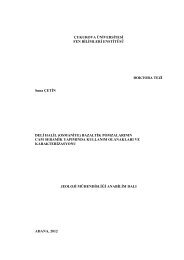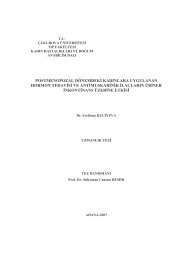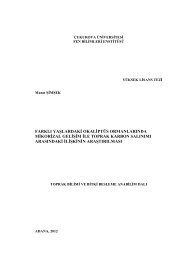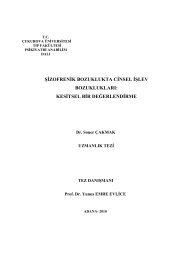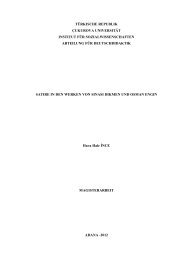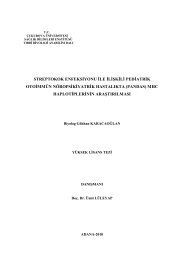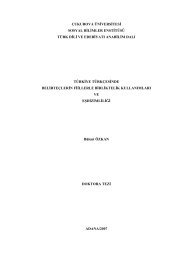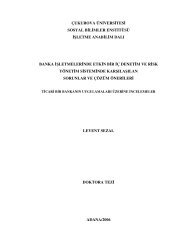ÇUKUROVA UNIVERSITY INSTITUTE OF NATURAL AND APPLIED ...
ÇUKUROVA UNIVERSITY INSTITUTE OF NATURAL AND APPLIED ...
ÇUKUROVA UNIVERSITY INSTITUTE OF NATURAL AND APPLIED ...
Create successful ePaper yourself
Turn your PDF publications into a flip-book with our unique Google optimized e-Paper software.
3. FUNDAMENTALS <strong>OF</strong> DVR Mustafa İNCİ<br />
converters becomes difficult to justify owing to the high voltages that the switches<br />
must block (Roncero-Sánchez et al., 2009).<br />
One solution is to use multilevel voltage-source converters which allow high<br />
power-handling capability with lower harmonic distortion and lower switching<br />
power losses than the two-level converter (Roncero-Sánchez et al., 2009).<br />
Among the different topologies of multilevel converters, the most popular<br />
are: neutral-point-clamped converters (NPC), flying-capacitor converters (FC), and<br />
cascaded-multimodular H-bridge converters. NPC converters require clamping<br />
diodes and are prone to voltage imbalances in their dc capacitors. The H-bridge<br />
converter limitations are the large number of individual inverters and the number of<br />
isolated dc voltage sources required. The main drawback of FC converters is that the<br />
number of capacitors increases with the number of levels in the output voltage.<br />
However, they offer more flexibility in the choice of switching combinations,<br />
allowing more control of the voltage balance in the dc capacitors. Furthermore, the<br />
extension of a converter to a higher level one, beyond three levels, is easier in FC<br />
converters than in NPC converters, which makes the FC topology more attractive<br />
(Roncero-Sánchez et al., 2009).<br />
3.2.2.2. Rectifier<br />
AC to DC converter is used to convert AC into DC form. The topology used<br />
in dynamic voltage restorer is diode rectifier. Installation of a diode-bridge rectifier<br />
circuitry to the DVR provides an economical means for the dc-link to negotiate<br />
active power. Unfortunately, this DVR configuration only allows unidirectional<br />
power flow from the diode-bridge rectifier circuitry to the inverter. When swell or<br />
overvoltage occurs in the power distribution lines, the conventional in-phase and<br />
phase-invariant voltage injection schemes cause inverters to absorb active power<br />
from the lines, which charges up the dc storage capacitors and increases their voltage<br />
levels. Excess dc-link voltage rise will damage the dc storage capacitors and<br />
switching devices. Moreover, the rise in dc-link voltage will nonlinearly increase<br />
switching loss and lowers the DVR’s system efficiency (Lam et al., 2008).<br />
19



